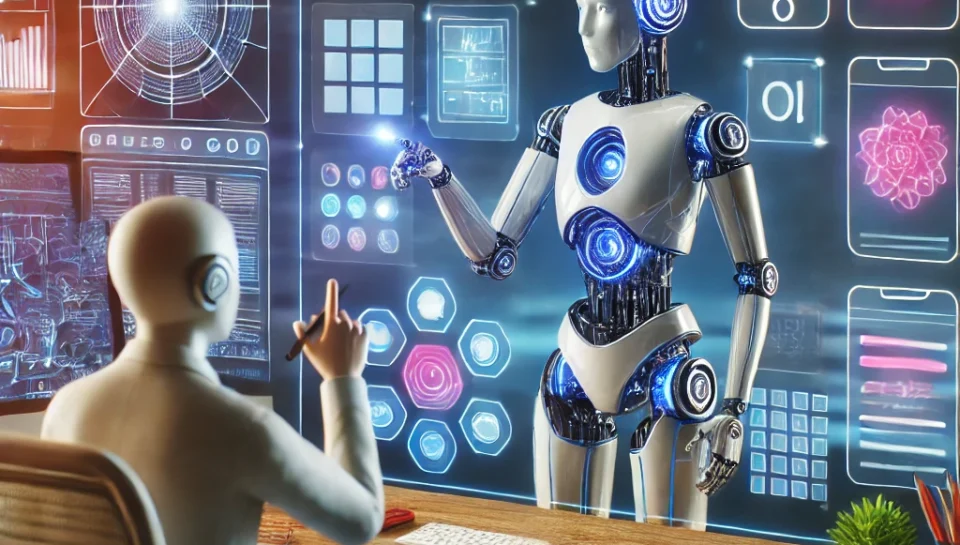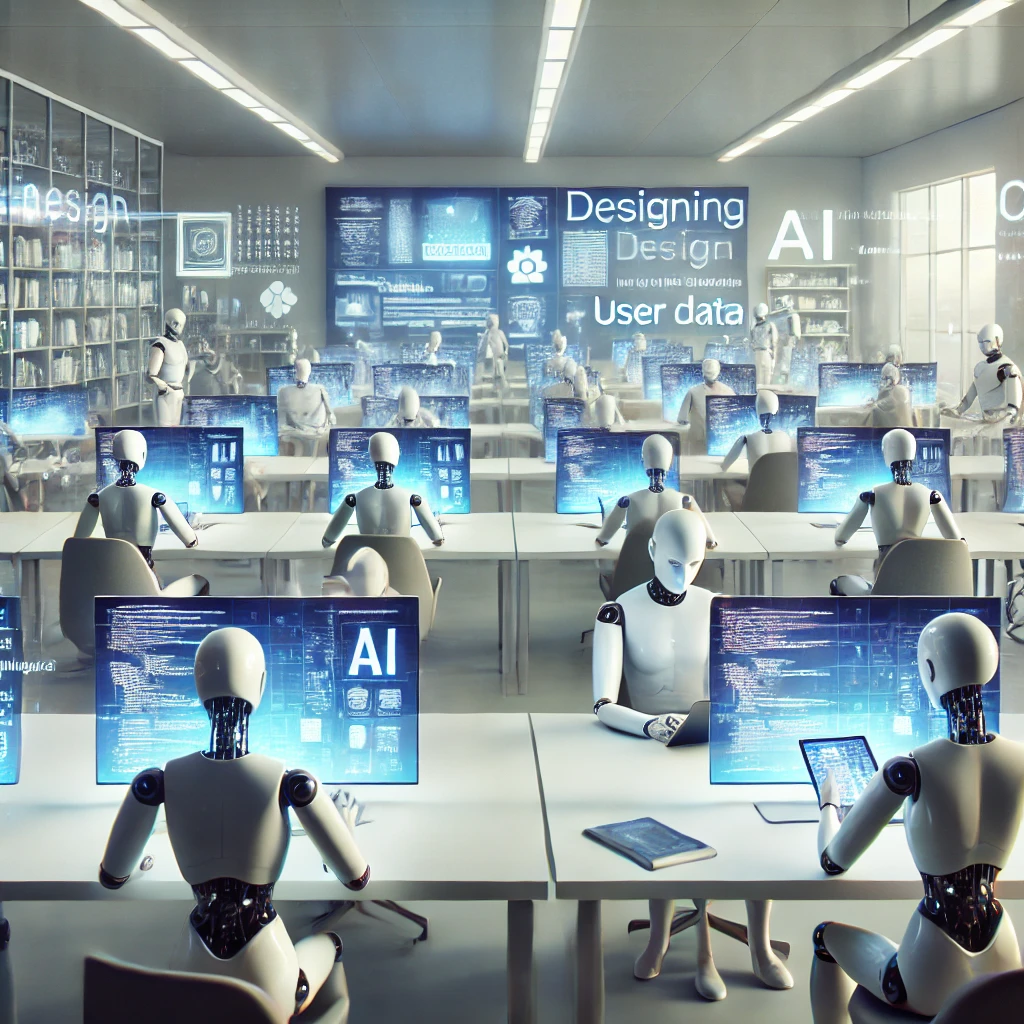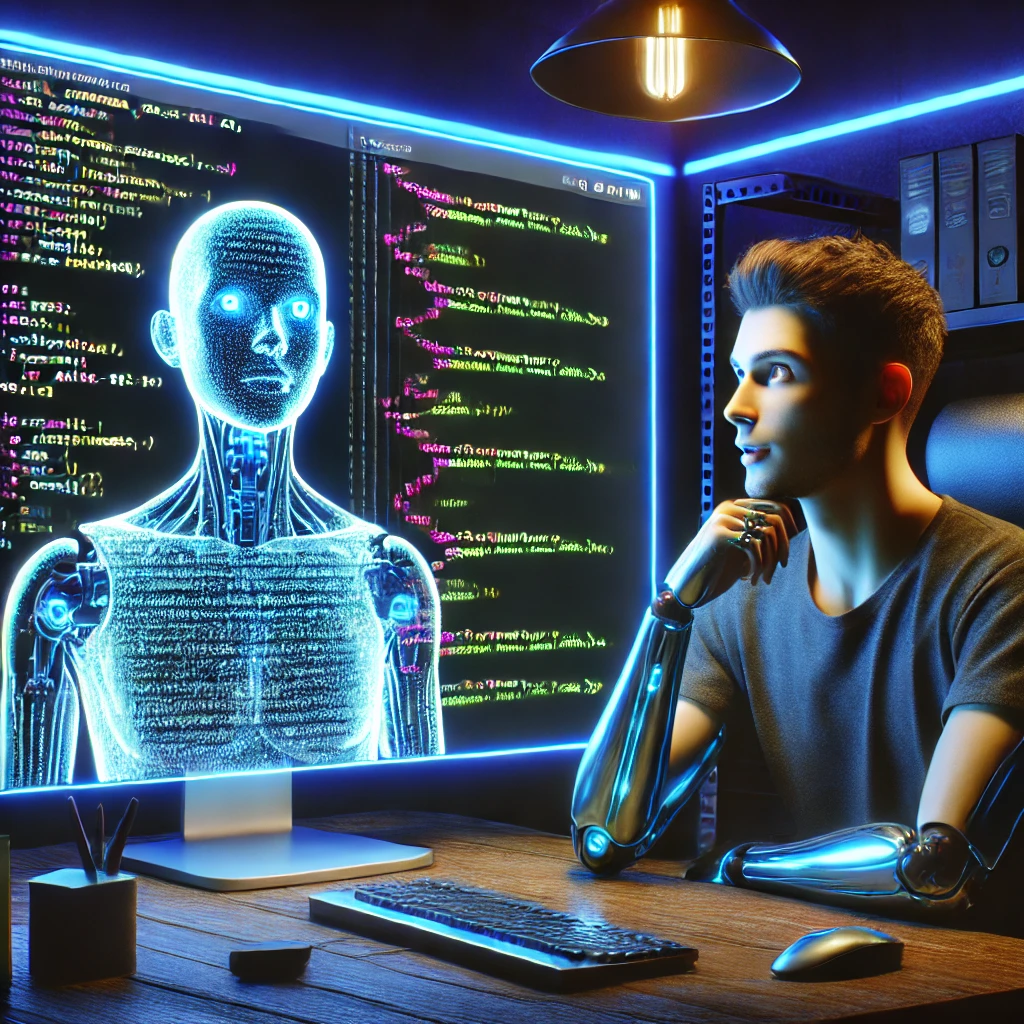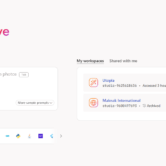
AI in Web Development 2025:Transformative Trends
Introduction
Holy smokes, can you believe AI tools have slashed coding time by a whopping 47% for front-end developers in the past year? That’s not just a number—that’s a complete game-changer for folks like us in the web development world! I remember staying up until 3 AM just a few years ago, manually debugging CSS issues that now get fixed automatically in seconds. Ai in web development.
The web development landscape I witnessed 5 years ago barely resembles what we’re seeing today. AI isn’t just some fancy add-on anymore—it’s becoming the backbone of how we create digital experiences. From generating code to designing intuitive user interfaces, artificial intelligence has transformed from a “nice-to-have” into an absolute necessity.
And let me tell you, as someone who initially resisted these AI tools (stubborn old-school coder here!), I’ve completely changed my tune after seeing how they’ve revolutionized my workflow! Whether you’re coding in your basement or running a development team at a major company, understanding this AI revolution isn’t optional anymore—it’s essential for staying relevant in our rapidly evolving field.
The Evolution of AI in Web Development
I still chuckle when I think about my first encounter with “AI” in web development around 2022. Back then, what we called “artificial intelligence” was basically just some fancy autocomplete in our code editors. Nothing like the powerhouse tools we have now!
The journey from those early days to today’s sophisticated AI systems has been wild to witness firsthand. I remember dismissing early AI coding assistants as “toys” that could never understand the nuances of proper development. Boy, was I wrong! The transition from those basic automation tools to today’s intelligent assistants has been nothing short of remarkable.
One particularly humbling moment came when I spent three hours debugging a particularly nasty JavaScript issue, only to have a junior developer solve it in five minutes using an AI assistant. That was my wake-up call. These tools weren’t just fancy gimmicks—they were actually changing the game completely. Ai in web development
The evolution really accelerated around 2022-2023 when large language models got integrated into development environments. Suddenly, these tools weren’t just suggesting simple code completions—they were understanding context, anticipating needs, and even explaining complex concepts. The ability to simply describe what I wanted to accomplish and have functional code generated saved me countless hours.
For developers who’ve been in the field as long as I have, the shift has been both exciting and a bit scary. I used to pride myself on memorizing syntax and knowing all the quirks of different browsers. Now, those skills are less important than knowing how to effectively collaborate with AI tools. My role has evolved from writing every line of code to becoming more of an architect and curator—focusing on the big picture while delegating implementation details to AI assistants.
What’s particularly fascinating is seeing how developer roles have transformed. We’re spending less time on repetitive coding tasks and more time on strategic thinking, creativity, and human-centered design decisions. The mundane parts of development—like writing boilerplate code, basic styling, and standard functions—are increasingly handled by AI, freeing us up to focus on innovation.
I’ve had to adapt my skills significantly, moving from being primarily a code writer to becoming more of a prompt engineer and solution architect. It’s been challenging but incredibly rewarding. The key lesson I’ve learned? Embracing AI doesn’t mean becoming less valuable as a developer—it means evolving your role to focus on the uniquely human aspects of creation that AI can’t replicate. Ai in web development
AI-Powered Code Generation and Assistance
Let me tell you about my first experience with AI code generation—it was both humbling and eye-opening! I’d spent almost a year priding myself on my coding efficiency, only to watch an AI assistant generate in 30 seconds what would’ve taken me 45 minutes to write. Talk about a reality check!
These AI coding tools have completely transformed my daily workflow. I use GitHub Copilot and similar assistants almost constantly now, and they’ve become like a pair-programming buddy that never needs coffee breaks. The best part? They learn from my coding style over time, which means the suggestions get spookily accurate the more we work together.
One thing I’ve learned the hard way: don’t just blindly accept everything these AI assistants suggest. Early on, I made the rookie mistake of implementing an AI-generated authentication system without properly reviewing it. The code looked great, but it had some serious security vulnerabilities that a human reviewer would’ve caught immediately. That experience taught me that AI is an incredible assistant but not a replacement for human judgment.
The productivity boost from these tools is just bonkers though. Tasks that used to eat up my entire morning—like setting up API endpoints or creating form validation—now take minutes instead of hours. This has completely changed what I can deliver to clients and how quickly I can iterate on projects. Ai in web development
Here’s a practical tip I wish someone had told me: spend time learning how to write effective prompts for your AI assistant. Being specific about what you need, the libraries you’re using, and your preferred coding style makes a massive difference in the quality of the generated code. It’s almost like learning a new programming language—the language of talking to AI!
The ethical considerations around AI-generated code are something I wrestle with regularly. On one hand, it’s democratizing development by making it more accessible to newcomers. On the other hand, I worry about developers becoming overly dependent on these tools without understanding the fundamentals. I’ve seen junior devs who can use AI to generate impressive-looking code but struggle to debug it when something goes wrong.
Looking ahead, I’m particularly excited about AI tools that don’t just generate code but can explain complex codebases. I recently used an AI assistant to help me understand a legacy project I inherited, and it saved me days of headache trying to reverse-engineer someone else’s thought process. The ability to ask questions about code in natural language and get clear explanations is a game-changer for maintenance tasks.
The trajectory is clear: AI coding tools are going to get even more sophisticated, moving beyond simple code generation to become true development partners. The developers who will thrive are those who view AI not as a threat but as an amplifier for their own creativity and problem-solving abilities. Ai in web development
Intelligent Design Systems and UX Optimization

Design was always my weak spot as a developer. I’d spend hours tweaking CSS only to end up with something that looked like it was designed in the late ’90s! AI design tools have been an absolute lifesaver for people like me with limited design skills.
The first time I used an AI tool to generate a complete UI based on just a rough sketch and description, I was floored. What would have taken me days of back-and-forth with a designer was done in minutes. The designs weren’t just functional—they actually looked good! It felt like cheating, but in the best possible way.
One particularly game-changing aspect has been how these AI tools can learn from user behavior. I remember working on an e-commerce site where we implemented an AI system to analyze how visitors navigated the checkout process. The insights were eye-opening! The system identified bottlenecks we never would have spotted ourselves and suggested tweaks that boosted conversion rates by 23%. That was the moment I became a true believer in AI-powered UX optimization.
Personalization is another area where AI has completely transformed what’s possible. Gone are the days of one-size-fits-all websites. I built a content site last year that uses machine learning to customize the homepage layout based on each visitor’s browsing history and preferences. The engagement metrics went through the roof! Users spent almost twice as long on the site because the content felt personally relevant to them. Ai in web development
A/B testing has also been completely revolutionized by AI. In the old days, I’d manually set up tests and wait weeks to collect enough data for meaningful results. Now, AI systems can run dozens of simultaneous tests, analyze the results in real-time, and automatically implement winning variations. It’s like having a team of analysts working 24/7 to optimize your site.
One practical tip I’ve learned: don’t try to implement every AI design feature at once. Start small with one aspect of your site—maybe just the product recommendations or the navigation—and let users adapt to the changes gradually. I made the mistake of rolling out a completely AI-redesigned interface all at once, and users were confused by the sudden change. Incremental implementation is much more effective.
The most exciting part is seeing how these design systems can evolve over time based on user interactions. It’s like having a website that gets smarter with every visitor, continuously refining itself to better serve your audience. Traditional static designs feel outdated by comparison.
AI-Enhanced Testing and Quality Assurance
Testing used to be the bane of my existence as a developer. I’d spend hours writing test cases, running them manually, and debugging issues. AI has completely transformed this tedious process into something much more manageable and, dare I say, almost fun! Ai in web development
My first encounter with AI-powered testing was a revelation. I’d just spent three days manually testing a complex web application, only to have numerous bugs reported by users after launch. Talk about embarrassing! When I implemented an AI testing framework on my next project, it discovered edge cases I never would have thought to test. The difference in quality was night and day.
Automated testing frameworks powered by AI have become my secret weapon for delivering robust applications. These tools don’t just run the tests I write—they actually generate test cases based on the application’s behavior and user patterns. It’s like having a quality assurance team that works 24/7 and never misses a detail. Ai in web development
The predictive analysis capabilities have saved my bacon more times than I can count. On one project, the AI flagged a potential memory leak that would only occur under very specific circumstances. Had that gone into production, it would have caused major performance issues for users. Instead, we caught and fixed it before anyone was affected.
Visual regression testing through machine learning has been another game-changer. Remember the days of manually comparing screenshots to check if visual changes were intentional or bugs? Now AI handles that automatically, flagging only the differences that matter and ignoring minor variations. This has saved me countless hours of tedious comparison work.
One mistake I made early on was treating AI testing as a replacement for human testing rather than a complement. The reality is that both have their strengths. AI excels at repetitive, detailed testing at scale, while human testers are better at evaluating subjective qualities like user experience and aesthetic appeal. The most effective approach combines both.
Security vulnerability detection has been dramatically improved by AI systems. I used to rely on occasional security audits, but now AI tools continuously scan my code for potential vulnerabilities as I write it. I remember one instance where an AI security tool flagged an SQL injection vulnerability in my code that had slipped past both me and my human reviewers. That could have been a serious security breach if it had made it to production!
A practical tip I’ve learned: don’t just set up AI testing and forget about it. Take time to review the test results regularly and understand the patterns it’s identifying. This helps you become a better developer by learning from the issues the AI discovers. I’ve significantly improved my coding practices by studying the types of bugs my AI testing system consistently catches in my work. Ai in web development
The Rise of Low-Code and No-Code AI Platforms
I used to be such a code snob. When low-code platforms first came on the scene, I dismissed them as toys for amateurs. “Real developers write code,” I thought. Well, I had to eat those words when I saw what modern AI-powered low-code platforms can do!
My perspective completely changed when a marketing team member at a client company built a fully functional customer portal using a no-code platform in a single afternoon. The same project would have taken my team at least two weeks to develop from scratch. That was a serious wake-up call about the changing landscape of web development. Ai in web development
These AI-powered development platforms have democratized web creation in ways I never thought possible. I’ve seen small business owners with zero technical background create sophisticated websites and applications that would have cost them thousands of dollars in development fees just a few years ago. It’s been incredible to witness this transformation.
For enterprise clients, the adoption of low-code solutions has accelerated development cycles dramatically. I consulted for a financial services company that reduced their application development time from months to weeks by implementing an AI-powered low-code platform. The compliance and security features built into these enterprise platforms addressed many of the concerns that initially made me skeptical about their use in regulated industries. Ai in web development
Integration capabilities have evolved tremendously. Early low-code platforms created siloed applications that couldn’t connect well with existing systems. Today’s platforms offer robust API integration options, allowing low-code applications to work seamlessly with traditional development environments. I’ve built hybrid solutions where the core functionality was developed traditionally while auxiliary features were rapidly deployed using low-code tools.
One particularly successful implementation I worked on was for a healthcare provider. They needed a patient scheduling system urgently during a crisis period. Using a low-code platform with AI-powered workflow automation, we deployed a solution in just four days that would have taken weeks with traditional development. The system has been running smoothly for over a year now, handling hundreds of appointments daily.
The impact on traditional development careers has been fascinating to observe. Rather than replacing developers, I’ve seen these platforms change the nature of development work. Developers are becoming more like solution architects—focusing on complex problems, integrations, and customizations while letting the platforms handle standard functionality. It’s freed us up to work on more interesting challenges.
Looking ahead, I expect the line between “developer” and “non-developer” to continue blurring. The technical knowledge required to create web applications is becoming less about syntax and more about understanding problems and designing solutions. This democratization of development is creating a more diverse and innovative digital landscape, which I find incredibly exciting despite my initial reservations.
Data-Driven Development with AI Analytics

Data used to intimidate me. I’d look at analytics dashboards and feel overwhelmed by the sheer volume of information. How was I supposed to know what metrics actually mattered? AI analytics tools have completely changed that experience for me and many other developers.
The integration of real-time analytics into development processes has transformed how I build websites. I remember working on an e-commerce site redesign where we implemented AI analytics tools that gave us immediate feedback on how users were responding to changes. We could see in real-time how a button color change affected conversion rates or how a new navigation layout impacted user engagement. Development became a dynamic, responsive process rather than a launch-and-hope approach.
Predictive modeling for user behavior has been particularly eye-opening. On one project, the AI analytics system predicted with surprising accuracy which features users would engage with most based on their initial interactions with the site. This allowed us to prioritize development resources toward the elements that would provide the greatest return on investment.
One of my biggest mistakes was ignoring AI-generated recommendations because they contradicted my “design intuition.” I insisted on implementing a carousel banner on a client’s homepage despite the AI analytics suggesting it would reduce engagement. Guess what? The data was right. When we finally removed the carousel in favor of the AI’s recommended static hero image with multiple entry points, engagement improved by 18%. That was a humbling lesson in trusting data over personal preferences. Ai in web development
Feature prioritization based on data analysis has saved me countless hours of debate in development meetings. Rather than arguing over which features should be prioritized based on opinions or the loudest voice in the room, we now let the data guide these decisions. The AI systems can analyze user behavior patterns and identify which features will deliver the most value to users and the business.
Performance monitoring has been revolutionized by AI tools that not only detect issues but automatically implement improvements. I used to spend hours optimizing image sizes, minifying code, and tweaking server responses. Now, AI systems handle many of these optimizations automatically, continuously fine-tuning the site’s performance based on real-time usage data and changing conditions.
The privacy considerations in AI-powered analytics are something I take very seriously. I’ve had to learn a lot about data anonymization techniques and regulatory requirements like GDPR and CCPA. One approach I’ve found effective is to work with AI systems that process data on-device whenever possible, minimizing the collection of personally identifiable information while still providing valuable insights.
For developers considering implementing AI analytics, my advice is to start small and iterate. Choose one area of your application to analyze deeply rather than trying to monitor everything at once. This focused approach yields more actionable insights and prevents analysis paralysis. As you become more comfortable with the tools and insights, you can gradually expand your analytics implementation.
Preparing for an AI-Integrated Development Future
The shift toward AI in web development has been like learning to swim in a new ocean—intimidating at first, but exhilarating once you get the hang of it. I’ve completely transformed my approach to staying relevant in this rapidly evolving landscape. Ai in web development
Essential skills for developers have changed dramatically in the AI era. When I started my career, technical coding skills were the primary focus. Now, the ability to effectively collaborate with AI tools has become equally important. I’ve invested significant time in learning prompt engineering—the art of communicating with AI systems to get optimal results. This skill has become as valuable as knowing a programming language.
I remember working with a senior developer who refused to adapt to AI tools. Despite his decades of experience, he eventually found himself struggling to keep up with younger developers who were leveraging AI assistants. It was a stark reminder that adaptability is now as important as technical expertise.
The training resources I’ve found most valuable aren’t necessarily about specific AI tools—they’re about developing the mindset and approach needed to work effectively with AI. Understanding the principles of machine learning, data patterns, and human-AI collaboration has proven more durable than learning the specifics of tools that might change next year.
Building complementary skills that AI cannot replace has become my focus. Creative problem-solving, ethical judgment, interpersonal communication, and domain expertise have all become more valuable as routine coding tasks are increasingly automated. I’ve seen developers who lean into these uniquely human skills thrive in the AI era.
One practical tip I share with development teams: create hybrid workflows that combine human creativity with AI efficiency. For example, having humans define the architecture and core user experience while letting AI handle implementation details often results in the best of both worlds. I implemented this approach on a recent project, and it reduced development time by 40% while maintaining high quality and innovative design.
For developers worried about being replaced by AI, I offer this perspective: AI is transforming our role rather than eliminating it. We’re becoming orchestrators of complex systems rather than writers of every line of code. This shift opens up new possibilities to focus on the most creative, challenging, and meaningful aspects of development while delegating routine tasks to our AI collaborators. Ai in web development
The most exciting aspect of this AI-integrated future is how it’s democratizing development. Tools that make coding more accessible are bringing diverse perspectives into our field—people who might have been intimidated by traditional coding but who bring valuable domain expertise, creative thinking, and problem-solving skills. This diversity will lead to richer, more innovative web experiences that better serve all users. Ai in web development
Conclusion
What a journey we’ve taken through the world of AI and web development! From code generation to ethical considerations, we’ve covered the transformative impact of artificial intelligence on how we build for the web. As someone who’s witnessed this evolution firsthand, I can tell you that we’re just scratching the surface of what’s possible.
The key takeaway? Artificial intelligence isn’t replacing web developers—it’s empowering us to create better, more personalized digital experiences while freeing us from repetitive tasks. By embracing these tools as collaborators rather than competitors, we can focus on the uniquely human aspects of creation: empathy, creativity, and strategic thinking.
As you implement AI in your own development workflow, remember to start small and iterate. You don’t need to overhaul your entire process overnight. Begin with a single aspect—maybe code generation or analytics—and expand as you gain confidence. The most successful developers I know have taken this measured approach to AI adoption.
I’d love to hear how you’re using AI in your development work! What tools have you found most helpful? What challenges have you encountered? Share your experiences in the comments below, and let’s learn from each other as we navigate this exciting new frontier together. Ai in web development
Remember—the future of web development belongs to those who can effectively combine human creativity with AI capabilities. The question isn’t whether to embrace this change, but how to do so in ways that create more value, accessibility, and delight for all users. Happy coding!
artificial intelligence in web development
machine learning for websites
AI coding assistants
automated web design
neural networks in frontend Ai in web development
intelligent UX optimization
AI testing frameworks
code generation tools Ai in web development
predictive programming
natural language processing web
voice interfaces
chatbot integration Ai in web development
no-code AI platforms
low-code development
machine learning algorithms
responsive design automation Ai in web development
AI debugging tools
intelligent analytics
user behavior prediction
automated accessibility
AI personalization engines Ai in web development
web development automation
AI content generation
visual regression testing
machine learning optimization
conversational interfaces
AI development workflows
semantic code analysis
automated refactoring
predictive UX Ai in web development
developer productivity tools
AI project management
intelligent security analysis
automated performance optimization
cognitive computing web
deep learning applications Ai in web development
frontend AI integration
backend automation
smart development environments
data-driven web design
AI prototyping tools
virtual development assistants Ai in web development
automated documentation
adaptive interfaces
intelligent feature prioritization Ai in web development
progressive web apps AI
microservices automation
DevOps AI integration
continuous learning systems
real-time optimization Ai in web development






